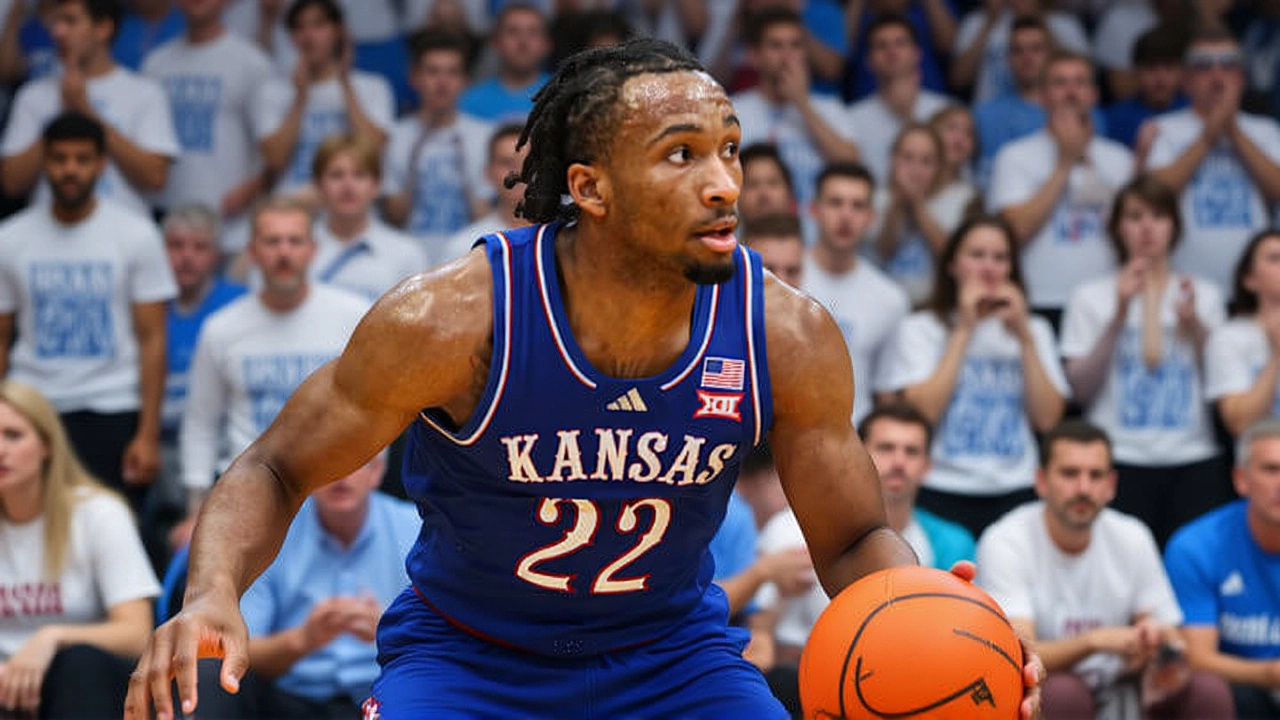On Tuesday night, November 18, 2025, the Duke Blue Devils proved they’re still a force in college basketball, outlasting the Kansas Jayhawks 78-66 at Madison Square Garden in New York City. The win, part of the annual State Farm Champions ClassicMadison Square Garden, wasn’t pretty—but it was effective. Duke, ranked fifth, improved to 5-1 on the season, while No. 24 Kansas, missing key forward Peterson, couldn’t overcome early foul trouble and a late surge from the Blue Devils. The game came down to poise under pressure—and Duke had more of it.
First Half Dominance Set the Tone
Duke didn’t shoot well from three—just 7-for-26—but they made up for it with relentless rebounding and disciplined ball movement. The Blue Devils closed the first half on a 17-5 run, turning a one-point deficit into an eight-point lead by halftime. Kansas, meanwhile, was already in deep trouble. All five starters picked up at least one foul before the break, and three had two fouls apiece. That forced head coach Bill Self to play conservatively, stifling Kansas’s natural fast-break rhythm. When Flory Bidunga picked up his fourth foul with 7:12 left in the second half, it was a death knell. By the time guard Bryson Tiller fouled out with 3:04 to go, Kansas’s defense was a shell of itself.
Boozer Twins Deliver When It Mattered
For Duke, the story was the Cameron Boozer and Cayden Boozer twin freshman duo. Cameron, a 6’9" forward, finished with a double-double: 18 points and 10 rebounds. But it was Cayden who made the plays that didn’t show up on the stat sheet—backdoor cuts, timely steals, and a pair of clutch mid-range jumpers in the final minutes that pushed Duke’s lead from five to eight. When Kansas cut the gap to 67-64 on a three by guard Melvin Council Jr. with 4:59 left, Duke responded with an 8-0 run. Patrick Ngongba fed Dominic for a layup, then Cameron Boozer sank two free throws after being fouled on a drive. Dominic added another pair. No panic. No hesitation. Just execution.
Kansas’s Valiant Effort, But Missing Pieces
It’s hard to fault Tre White. The Kansas guard poured in 23 points and grabbed nine rebounds, carrying the Jayhawks on his back. He hit tough shots over double teams, drove through traffic, and even defended Cameron Boozer on a key possession late. But without Peterson—a 6’10" interior presence who averages 14.2 points and 8.1 rebounds—Kansas lacked the size to match Duke’s frontcourt. ESPN’s postgame analysis noted that Kansas’s defensive scheme, designed to disrupt Duke’s perimeter passing, left them vulnerable inside. And when the Blue Devils started crashing the boards, Kansas simply didn’t have bodies to contest.
Coach Scheyer’s Quiet Leadership
Jon Scheyer, now in his third season as Duke’s head coach, didn’t celebrate wildly after the game. He didn’t need to. His calm demeanor has become his trademark since taking over from Mike Krzyzewski. "They put a ton of pressure on us," Scheyer said in the postgame press conference. "But I’m proud of the fact that we just... showed great resiliency. The key was our defensive rebounding." He also acknowledged the value of Duke’s earlier physical game against Texas. "That was the reason we played Tennessee in the exhibition. Kansas did a great job protecting the ball. We needed that toughness."
It’s easy to overlook how far Duke has come under Scheyer. Last season, they lost in the NCAA tournament’s second round. This year, they’ve already beaten two top-25 teams—Texas and Kansas—in back-to-back road games. Analysts are already calling them a title contender again. And with Cameron Boozer and Cayden emerging as dual threats, Duke’s future looks as bright as its past.

What’s Next for Both Teams?
Duke heads home to Cameron Indoor Stadium in Durham, North Carolina to face Niagara University on Friday night, November 22, 2025. The Blue Devils will look to rest key players and refine their half-court offense before their next big test.
Kansas, meanwhile, travels to Las Vegas, Nevada for the Players Era tournamentLas Vegas, where they’ll open against Notre Dame on Monday night, November 24. With Peterson still out and foul trouble a recurring issue, Kansas will need to adjust quickly—or risk falling out of the top 25.
Behind the Numbers: Why Duke Won
- Duke’s rebounding edge: 41 total rebounds to Kansas’s 32—15 offensive boards that led to 18 second-chance points.
- Foul trouble: Kansas starters averaged 3.4 fouls per player; Duke’s starters averaged 1.8.
- Free throw efficiency: Duke made 18-of-23 (78.3%); Kansas made just 10-of-16 (62.5%)—a 16-point swing in critical moments.
- Turnovers: Duke committed only 9; Kansas had 15, including 7 in the first half.
Frequently Asked Questions
How did Duke overcome poor three-point shooting?
Duke didn’t rely on outside shooting—they dominated the paint and the boards. Cameron Boozer and Patrick Ngongba combined for 29 points and 18 rebounds, while Duke’s offensive rebounding generated 18 second-chance points. Their ball movement, averaging 21 assists, created high-percentage shots inside, making up for their 27% clip from deep.
Why was Peterson’s absence so critical for Kansas?
Peterson, a 6’10" forward, was Kansas’s best interior defender and second-leading scorer. Without him, Duke’s big men—especially Cameron Boozer—had free rein to operate in the post. Kansas’s bench lacked the size to match up, and their defensive rotations collapsed whenever Duke drove to the rim. His absence turned a balanced frontcourt into a liability.
What does this win mean for Duke’s national title hopes?
This victory solidifies Duke as a serious contender. Beating Kansas on the road, especially after a tough win over Texas, proves they can handle physical, high-pressure games. With two freshman stars emerging and Scheyer’s steady leadership, Duke has the depth, experience, and poise to go deep in March. Analysts now rank them among the top five in the nation.
Could Kansas still make the NCAA tournament despite this loss?
Absolutely. Even with this loss, Kansas still has a strong resume: they’ve played three top-25 teams already and are 4-2. Their next game against Notre Dame is crucial, but if they can win the Players Era tournament and finish in the top 10 of the Big 12, they’ll likely get a bid. The bigger concern is their foul trouble and lack of depth—not their overall potential.
How did the Champions Classic impact the teams’ rankings?
Duke’s win likely keeps them in the top five, possibly pushing them to No. 4 as other teams lose. Kansas, already on the bubble at No. 24, could drop out of the top 25 if they lose to Notre Dame and fail to win the Players Era tournament. The Champions Classic is a showcase—and this result sends a message: Duke isn’t just back, they’re dangerous.
Why was Madison Square Garden such a factor in this game?
Madison Square Garden is one of the loudest, most intimidating arenas in college basketball. Kansas, used to playing in front of 16,000 in Lawrence, struggled to communicate on defense in the noise. Duke, with more experience in big venues from last year’s NCAA run, handled the pressure better. The crowd’s energy fueled Duke’s late surge—and rattled Kansas at the worst possible time.

